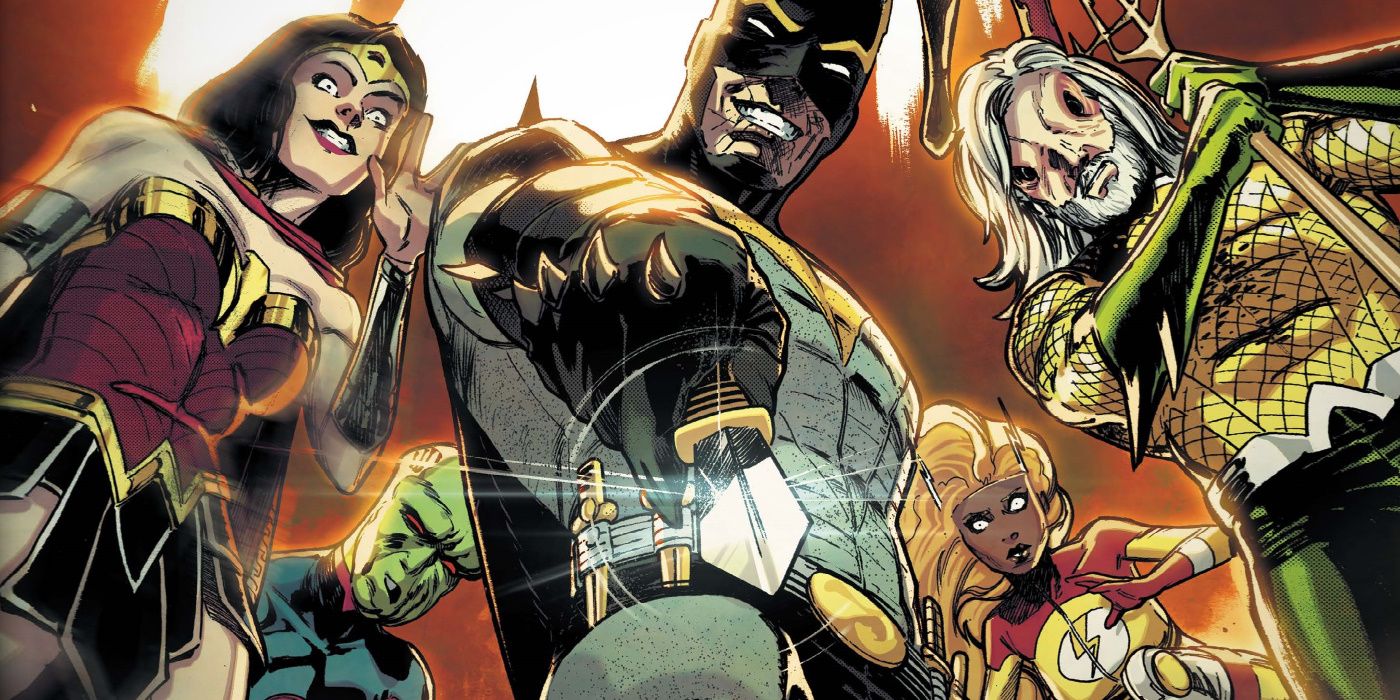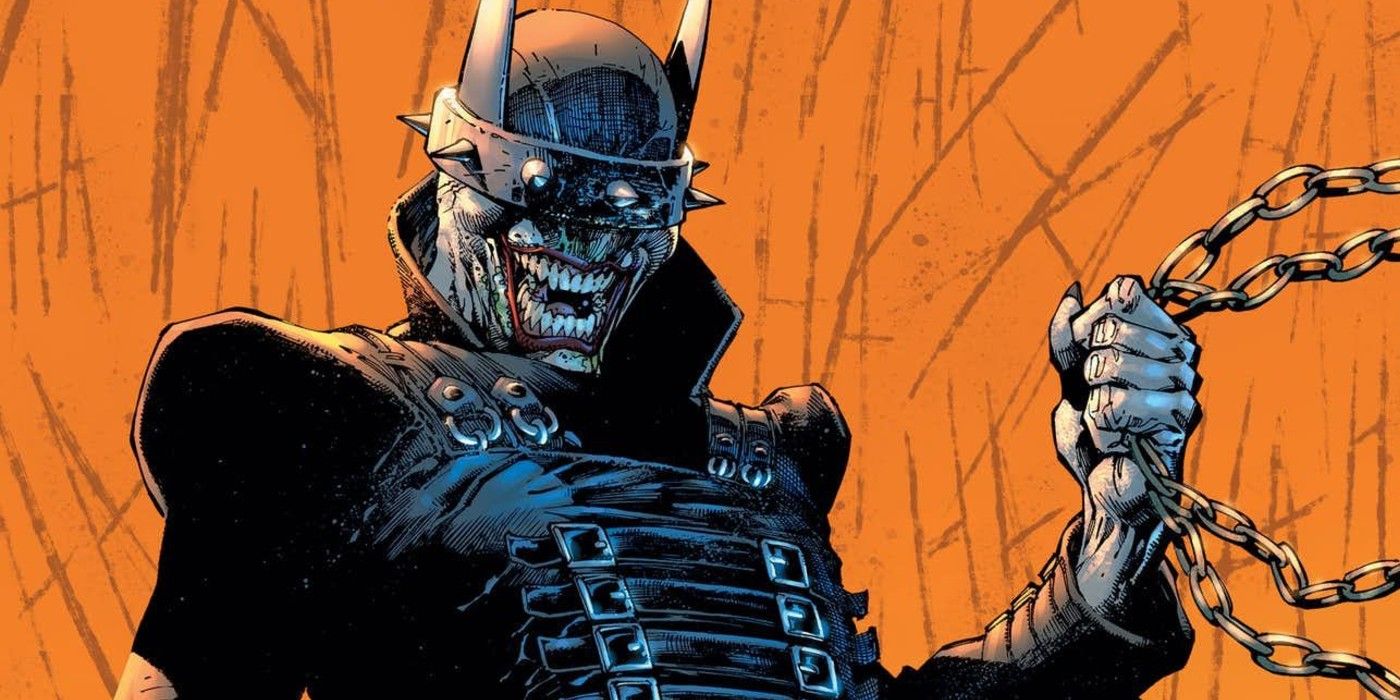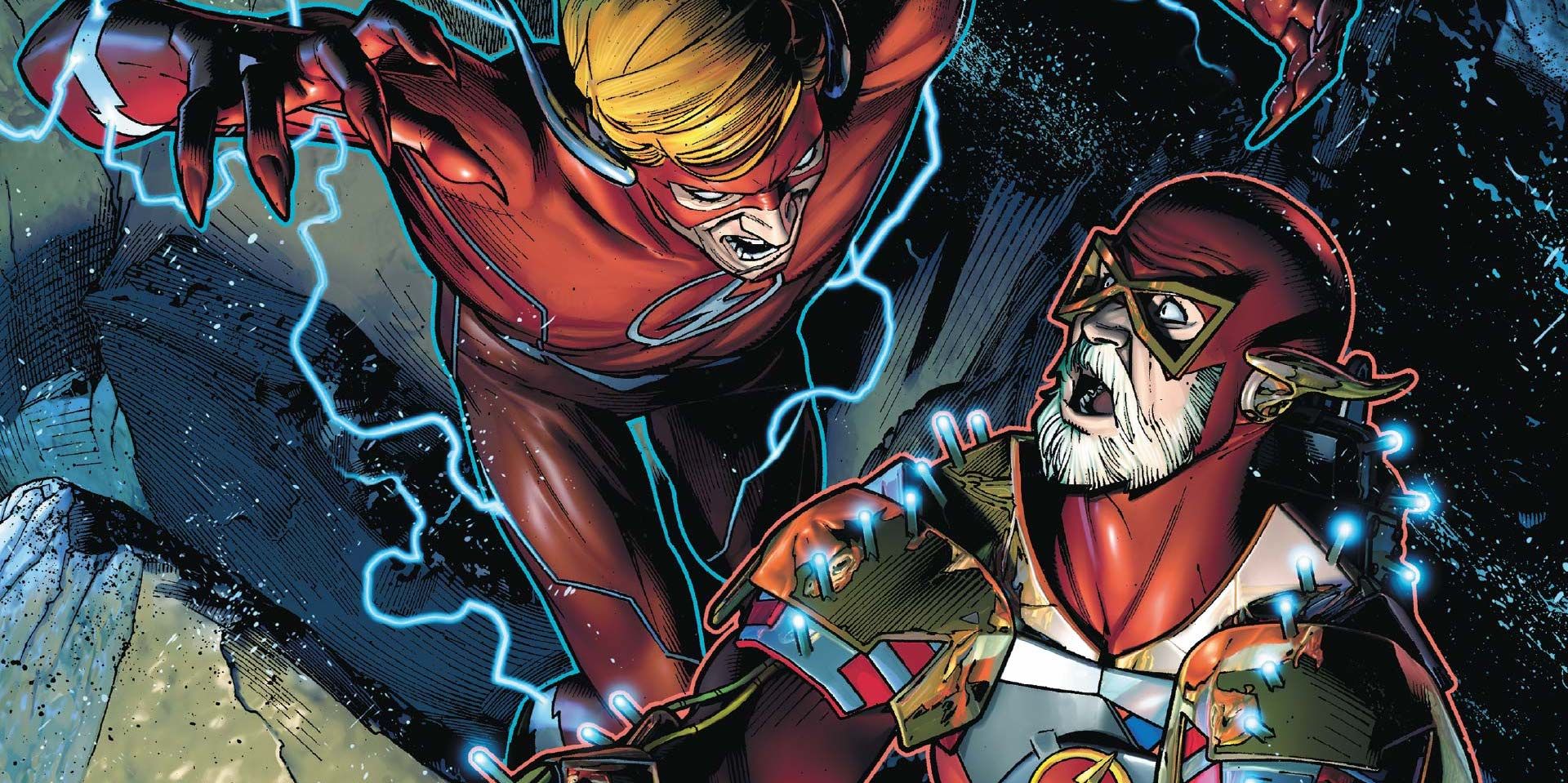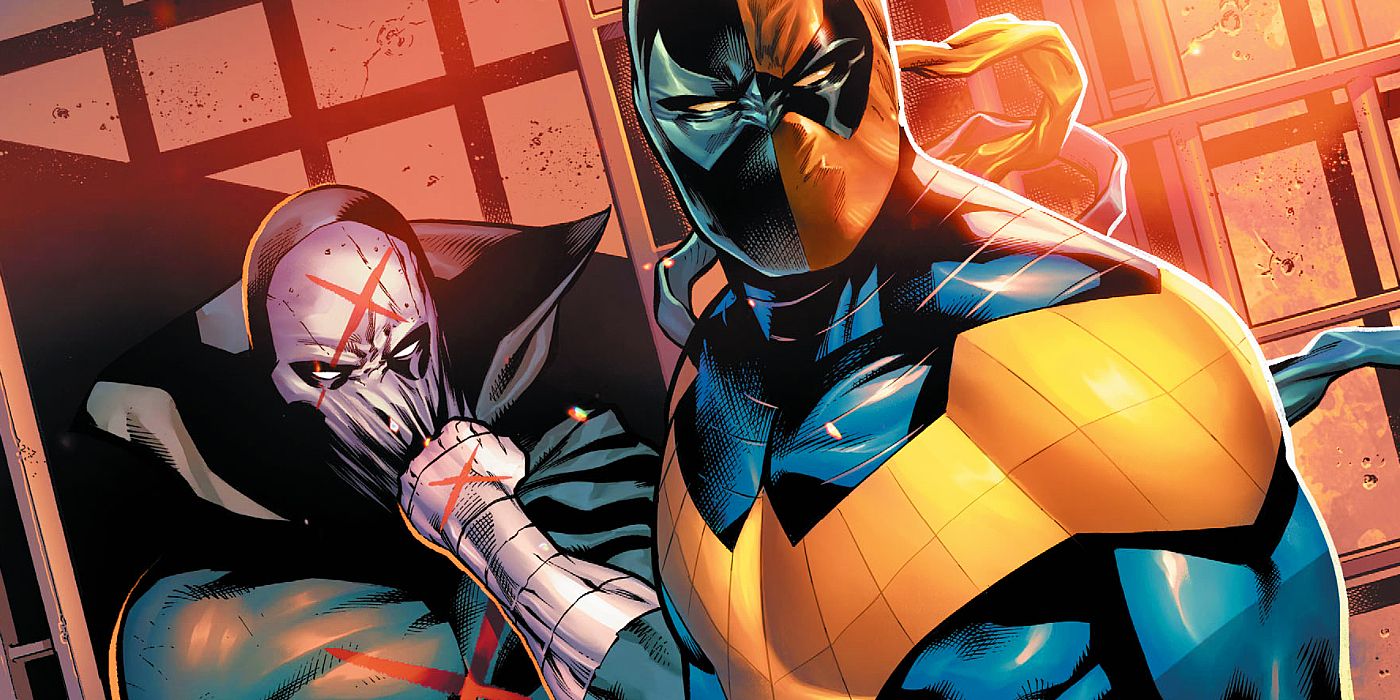DC's Future State is Breaking the Promise of Dark Nights: Death Metal

Warning: contains spoilers for Future State and Dark Nights: Death Metal
The long life of comic book universes means they're bound to repeat themselves, and no comic universe is as long-lived as DC's. While it can often be exciting to see a new writer's take on a classic story, there are times where comic companies repeat themselves a little too often. This has proven to be the case with DC's reboots. The idea of rebooting their entire continuity may have been novel when they first did it with Crisis On Infinite Earths, but in 2021 it feels stale. DC's last universe reshaping event, Dark Nights: Death Metal seemed like a promise from DC to stop telling stories that were needlessly bleak. Unfortunately, DC: Future State shows that DC has no intentions of stopping their misery parade.
Before Dark Nights: Death Metal, the DC Universe had grown increasingly grim. Though the Rebirth event was purposefully designed to undo much of the misery that rose out of the New 52, it didn't take long for DC to fall back into old habits. Bane killed Alfred, The Teen Titans illegally detained and tortured villains, Nightwing lost his memory, and worst of all Wally West accidentally became a mass murderer. While some of these stories might have been fine on their own, the problem is that started to become the only type of story that DC was interested in telling. Wally West's return in Rebirth was touted as the return of hope and optimism to the DC Universe. It's fitting that DC would end that streak by having Wally accidentally kill dozens of heroes.
But then came Dark Nights and its sequel, Death Metal. Both titles may have had their own problems, but they were undeniably fun events that played up the DC Universe's goofier elements. Every hero got a punk rock makeover and fun new characters like Jarro, the greatest Robin and Batmanasaurus were introduced. The story's ultimate villain, the Batman Who Laughs, is a literal personification of all the darkness which had built up in the DC Universe. His constant taunts about wanting darkness, combined with the new dark multiverse, was a clear indication from DC that they recognized their past fault of just telling stories that were dark for the sake of being dark. DC's intentions might have been noble, but with Death Metal DC repeated mistakes it should have learned from past events.

The event itself might have been criticizing darkness, but it was dark itself. Superman was tortured on Apokolips, heroes died, and all of the alternate Batmen had backstories even more tragic than the regular Batman. To cap off the event, Wonder Woman even sacrificed herself to ensure that the universe could be reborn. It's all sad, but ends on a happy note, with the multiverse restored and the pre-New 52 DC continuity finally canon again. Much like Rebirth before, it appeared like DC would ease up on the misery for at least a year. Unfortunately, they didn't even wait a month.
Between Death Metal and the company-wide relaunch, Infinite Frontier is Future State. This event promised to introduce potential new heroes and show exciting possible futures that the rebuilt universe could head towards. At first glance, this event appeared to be DC's attempt at modernizing their classic heroes. Future State's Flash is non-binary, its Wonder Woman is Brazilian, and its Batman is Black. During the initial reveal, it really did seem like DC's future was bright. Then the issues came out and it became apparent that this was not the case.
The worst offender of pointless darkness is easily the trilogy of Future State: Flash, Teen Titans, and Shazam! These three books follow a plot thread where the Teen Titans inadvertently unleash the Four Riders of the Apocalypse. This results in Wally West, DC's apparent punching bag, becoming the physical embodiment of famine and killing many heroes in an eerie echo of Heroes in Crisis. Barry Allen's constant attempts at saving his former sidekick are ultimately proven futile as Famine is revealed to be feeding off his hope. Future State: Flash ends with Barry fading into the Speed Force having completely failed in his mission to save Wally.

This is followed by Future State: Teen Titans where Nightwing and Starfire hate each other, Cyborg and Beast Boy have been merged into one being, and everything is miserable. Nightwing even goes as far as claiming that the Teen Titans are child soldiers, which retroactively makes past Titans adventures more depressing than they already were. Teen Titans leads directly into Shazam, which sees Billy Batson trapped in Hell and the big red cheese himself becoming an amoral anti-hero who kills villains without a second thought.
Some of these plot points have the potential to be interesting stories but taken as a whole, it comes across more like DC wanted to create the most shocking scenarios possible. Flash begins with the death of Bart Allen. The first issue of Teen Titans ends with Dick putting on Deathstroke's mask. Shazam claims he murdered Tim Drake. All of these attention-grabbing moments pile up until the reader just becomes numb to it.
While this loose trilogy of books are the worst offenders of this, they aren't the only ones. Future State is littered with unnecessary conflict like Superman and Supergirl fighting each other. At the very least most of the other Future State titles have happy endings. Unfortunately, even the titles that aren't bleak still manage to be confusing.

Putting together exactly when each title takes place is far more difficult than it should be. Some books, such as the titles taking place in Gotham, are obviously set in the same time period, but others are not so clear. In Teen Titans, Dick mentions the Justice League not trusting each other, but it's initially difficult to tell which iteration of the League he's referring to. There is an official timeline for Future State, but it's not something most readers would be aware of and it's not outright stated in any of the issues themselves. If Future State took place in just one time period and told completely stand-alone stories, it would have been much easier to follow.
The result is a mess that feels like it doesn't amount to anything other than DC focus testing new characters and concepts. It's a testament to the creative teams behind some of these titles that new characters like Diana's opposite, Yara Flor, work as well as they do. Both of the Future State titles related to Wonder Woman display the heights that the event could have achieved. They're fun books that have dark elements, but ultimately never lose sight of hope. Unfortunately, most of Future State failed to live up to the optimism and clarity promised by Dark Nights: Death Metal. Readers can only hope that the upcoming relaunch Infinite Frontier will be much brighter than its predecessor.
from ScreenRant - Feed
